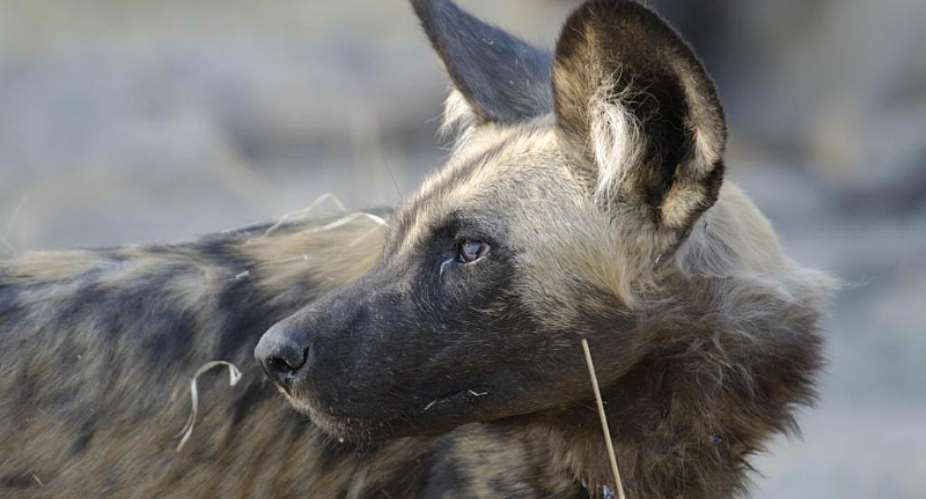Researchers in Botswana hope to recreate urine produced by African wild dogs at their scent marking sites as a way of keeping them safe within protected areas.
There are only around 700 packs of wild dogs, also known as painted dogs, left in a few dozen fragmented areas between South Africa and Chad, according to the International Union for Conservation of Nature.
The biggest threat they face is when they stray into farmlands or areas close to human settlement. That's when they kill livestock and then get targeted by angry farmers. Or they get run over by cars or trapped in wire snares.
Chemical signals
Using synthetic urine to make artificial marking sites will give conservationists a new tool to help keep wild dogs safely away from human activity, the researchers say.
“Urine and faeces deposited at their marking sites transmit chemical signals that keep packs from trespassing on one another's home ranges,” Peter Apps, the leader of BioBoundary research at the Botswana Predator Conservation Trust (BPCT) told RFI.
He said he and his team plan to “recreate the signals and use them to create artificial territory boundaries called BioBoundaries that will keep the endangered dogs safely inside protected wildlife areas.”
Camera traps
The use of communal scent marking sites by wild dogs was discovered through painstaking field work by BPCT researcher, Megan Claase, when she watched a wild dog pack "scent-marking" where other wild dogs had marked before.
Camera traps were set up to monitor wild dog activity at the site, and thousands of images and hours of video footage were gathered that revealed four different packs using the same site on a regular basis.
This behaviour contrasted with the standard picture of African wild dogs as animals that wander erratically around huge home ranges, but it did match the scent marking behaviour of other carnivores.
Missing key
Four years later, and the Botswana packs studied by the BPCT are still using the same site, says Apps of the Botswana Predator Conservation Trust.
“Discovering the marking sites is the key that unlocks the use of artificial scent marks to keep wild dogs safely inside protected areas,” he explained.
“If only urine and faeces deposited at marking sites contain chemical messages, and those left elsewhere are just waste products, it makes sense of results from our chemical analyses,” he said.
“It allows us to deploy artificial marks in spatial patterns that mimic how the wild dogs distribute their natural scent marks.”
Safety fears
In neighbouring Zimbabwe a conservation group recently had to airlift a pack of wild dogs from Hwange National Park, in the west of the country, to another park 400 kilometres away. The dogs had been straying out of Hwange and attacking goats in a nearby farming district.
There were very real fears for the dogs' safety.
“It is too early to say whether a BioBoundary of artificial scent would work in particular cases,” said Apps. “But a pack leaving a protected area and causing problems in neighbouring livestock areas would be the kind of problem that it would be aimed at solving."





 2024 election will be decided on the grounds of the economy; choice of running m...
2024 election will be decided on the grounds of the economy; choice of running m...
 Dumsor: We're demanding less; just give us a timetable — Kwesi Pratt to ECG
Dumsor: We're demanding less; just give us a timetable — Kwesi Pratt to ECG
 Do I have to apologise for doing my security work, I won’t – Simon Osei-Mensah r...
Do I have to apologise for doing my security work, I won’t – Simon Osei-Mensah r...
 Prestea and Bogoso mines: Complete payment of outstanding salaries not later tha...
Prestea and Bogoso mines: Complete payment of outstanding salaries not later tha...
 NDC postpones Prof. Opoku-Agyemang entry tour to May
NDC postpones Prof. Opoku-Agyemang entry tour to May
 All my businesses have collapsed under Akufo-Addo — NDC Central regional chair
All my businesses have collapsed under Akufo-Addo — NDC Central regional chair
 Military, Prison Officers clash in Bawku, three injured
Military, Prison Officers clash in Bawku, three injured
 GRA-SML contract: MFWA files RTI request demanding KPMG report
GRA-SML contract: MFWA files RTI request demanding KPMG report
 Court threatens to call second accused to testify if NDC's Ofosu Ampofo fails to...
Court threatens to call second accused to testify if NDC's Ofosu Ampofo fails to...
 Family accuses hospital of medical negligence, extortion in death of 17-year-old...
Family accuses hospital of medical negligence, extortion in death of 17-year-old...
